Antoni Gaudí: a guide to the architect’s magical world
Catalan creative Antoni Gaudí has been a unique figure in global architectural history; we delve into the magical world of his mesmerising creations
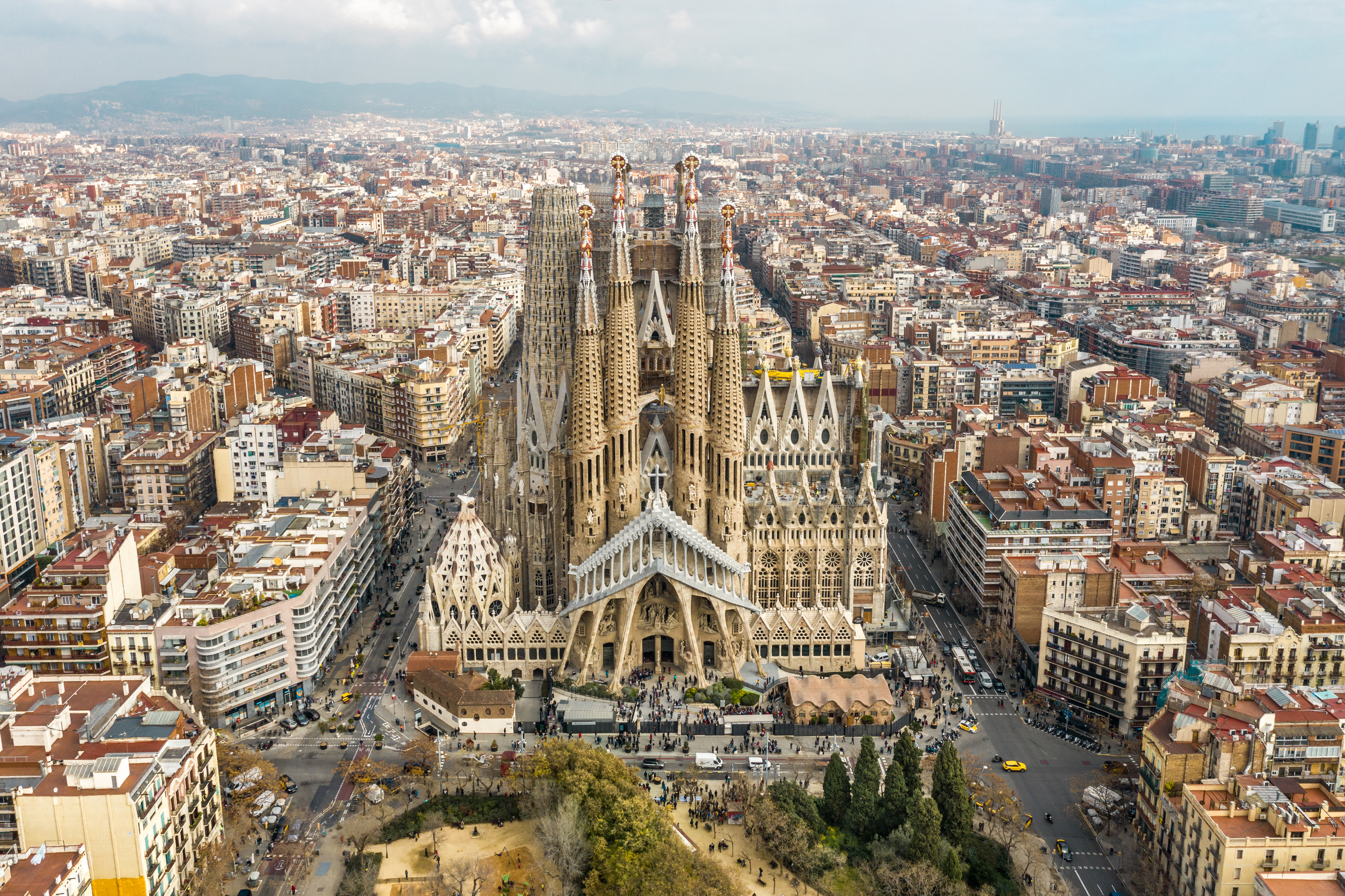
The work of Antoni Gaudí is the kind of architecture that stops you in your tracks. Dynamic, colourful, exuberant – but also highly calculated, craft-rich and precious – the designs of the Catalan master have more than stood the test of time. His buildings, expressive and decorative, are staples in Barcelona's cultural trails (where the architect completed most of his work) and remain highlights for architecture history enthusiasts and academics across the globe for their mesmerising qualities and deep influence on 20th-century architecture and beyond.
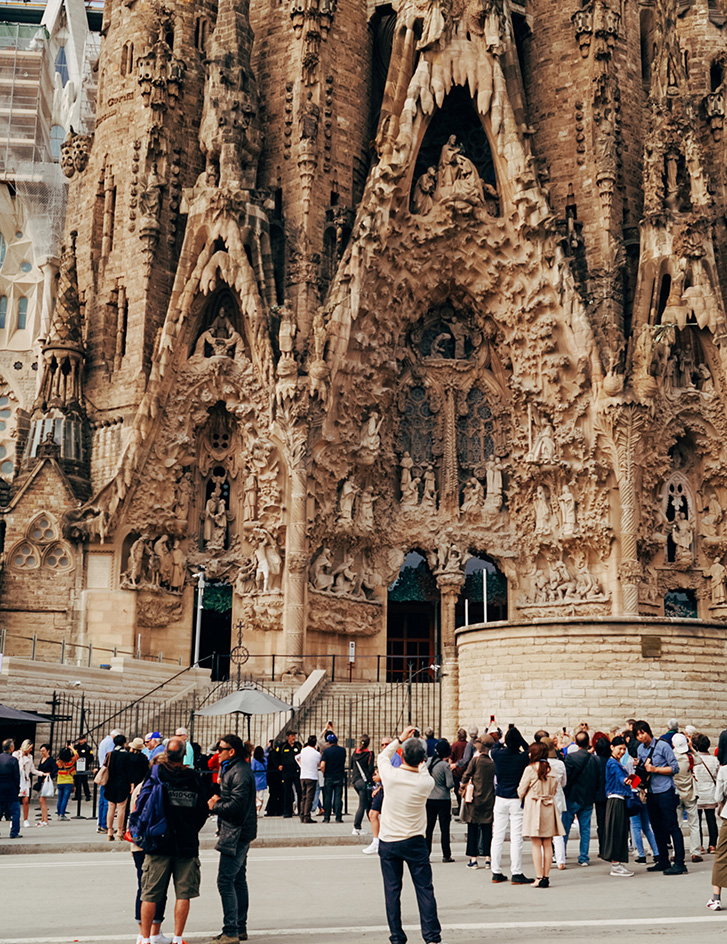
The entrance to Sagrada Família
Antoni Gaudi: a brief history
Gaudí (1852-1926) was born in Reus, near Barcelona, and in the span of his incredibly creative life and career, he became a key proponent of Catalan Modernism – ‘Modernisme’. Blending his profession, architecture, with his passion for nature and art, he was prolific in creating works imbued with a love for craft – ceramics, stained glass, wrought ironwork forging, and carpentry all play a central role in his designs. As a result, seven of his works are now Unesco World Heritage Sites.
The architect's key projects, all in or around Barcelona, include The Park Güell, the Palau Güell, the Casa Milà-La Pedrera, the Casa Vicens, the Nativity Façade and the Crypt of the Sagrada Família, the Casa Batlló, and the Crypt of the Colònia Güell. In them, the architect's quest for a new architectural language, one which nodded to historical roots and marked a clean break from the industrial revolution of his time, is evident. Gaudí's explorations of animal forms and spatial geometries often ruled by curves and arches evolved clearly over time.
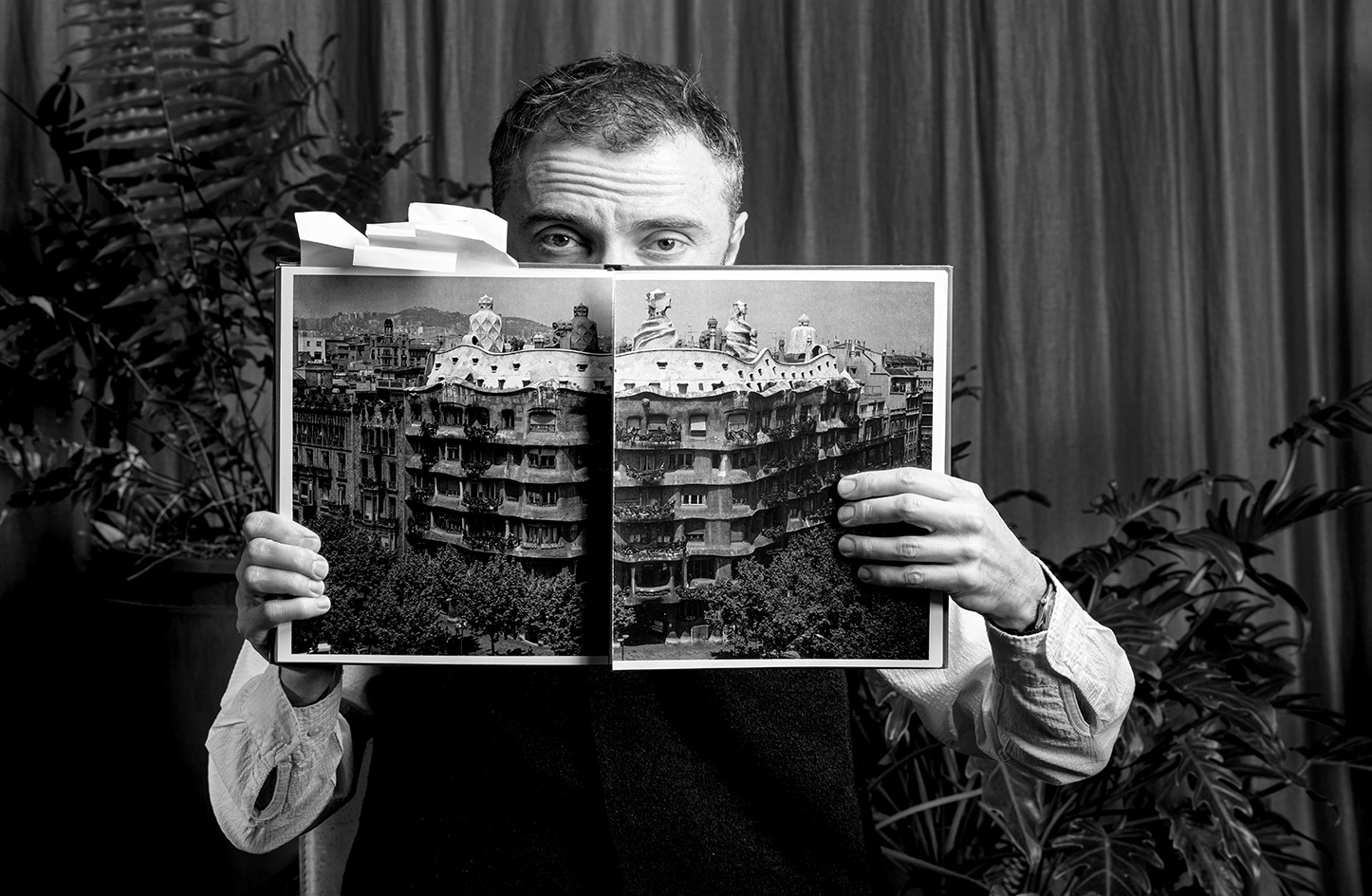
Gaudí has been an influence for countless creatives around the world; here, he is referenced in Thomas Heatherwick's recent book, Humanise
Natural motifs are omnipresent in most of Gaudí's works, as he drew on his Mediterranean heritage for his art. Nature’s influence appears in the organic forms that decorate his buildings, features such as sea-creature-inspired handrails and the catenary arches of his interiors. The result is always filled with a sense of life and movement that draws the eye and magnetises. Gaudí worked with a wealth of artisans who helped bring these visions to life – he had achieved a unique understanding of crafts, having attended a variety of makers' workshops during his student days.
The power of Gaudí's work is still felt today, with designers turning to it for study and inspiration. Recently, Thomas Heatherwick praised the architect's Barcelona work, such as La Sagrada Família and Casa Milà, for its visual complexity, historical reimaginings, and crafts-based approach, in his book Humanise.
Antoni Gaudí: the best of his architecture
Casa Batlló
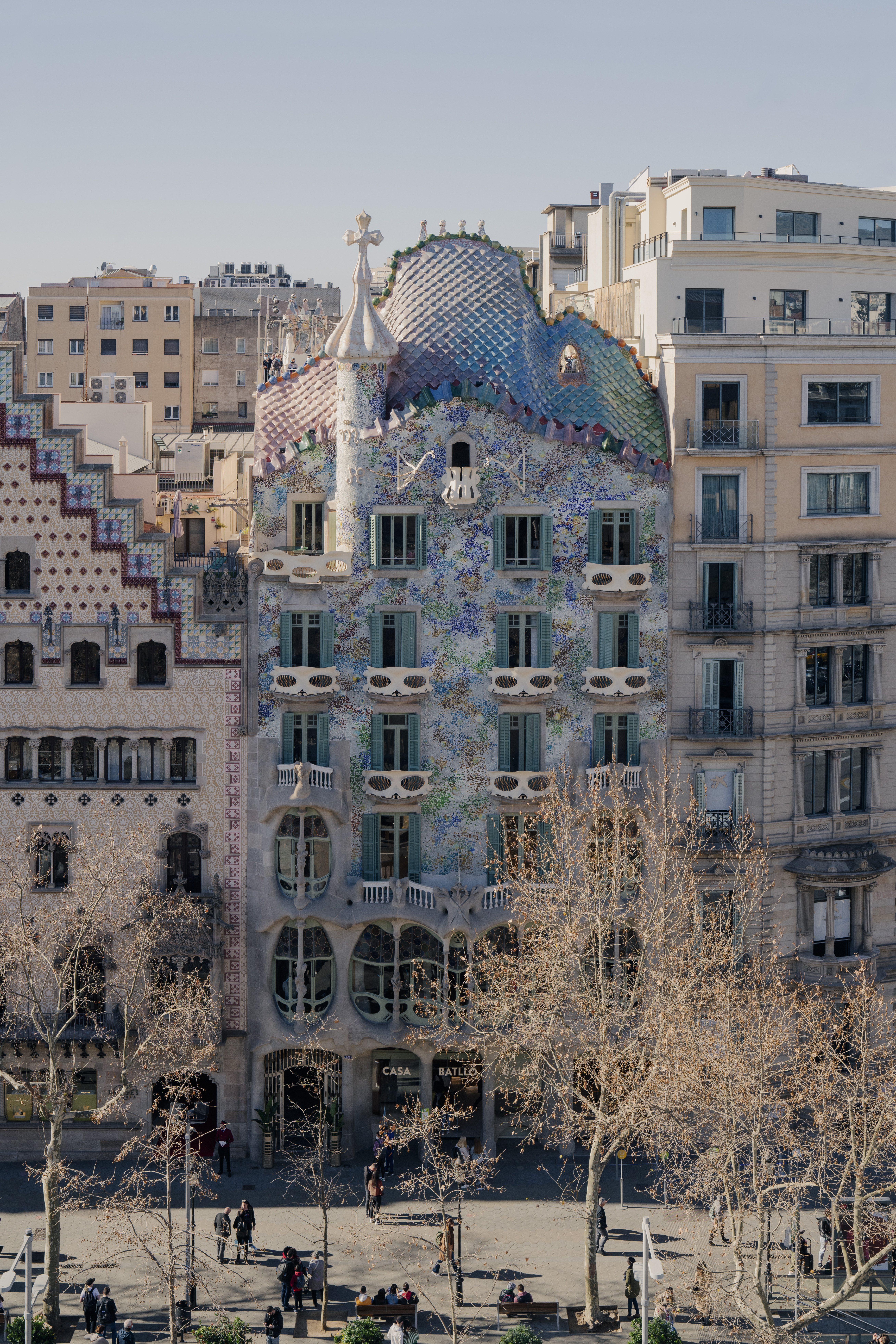
Casa Batlló
Casa Batlló, which attracts a million-plus visitors each year, is a worthy inclusion on any Gaudí trail, nodding to the natural world and showcasing the architect’s experimentation. Its colourful, undulating façade, adorned with broken glass and tiles, recalls ocean waves in its form and the way it catches the light, and speaks of an environmentally conscious approach. According to Gary Gautier, CEO of Casa Batlló, who spoke to Wallpaper* about the project’s recent refurbishment: 'Casa Batlló is Gaudí's “happiest” work. Created at the height of his career, it is a site of joy, an explosion of light and colour with one of the most fascinating façades in the history of architecture.’
Gaudí embarked on the project as the renovation of an 1877 building, and it evolved into one of his most striking works. His brilliance, Gautier told us, ‘extended to an energy-efficient ventilation system, with manually adjustable window openings and patios designed to retain heat in winter and ventilate in summer – a forward-thinking approach to comfort and sustainability’
Wallpaper* Newsletter
Receive our daily digest of inspiration, escapism and design stories from around the world direct to your inbox.
Park Güell
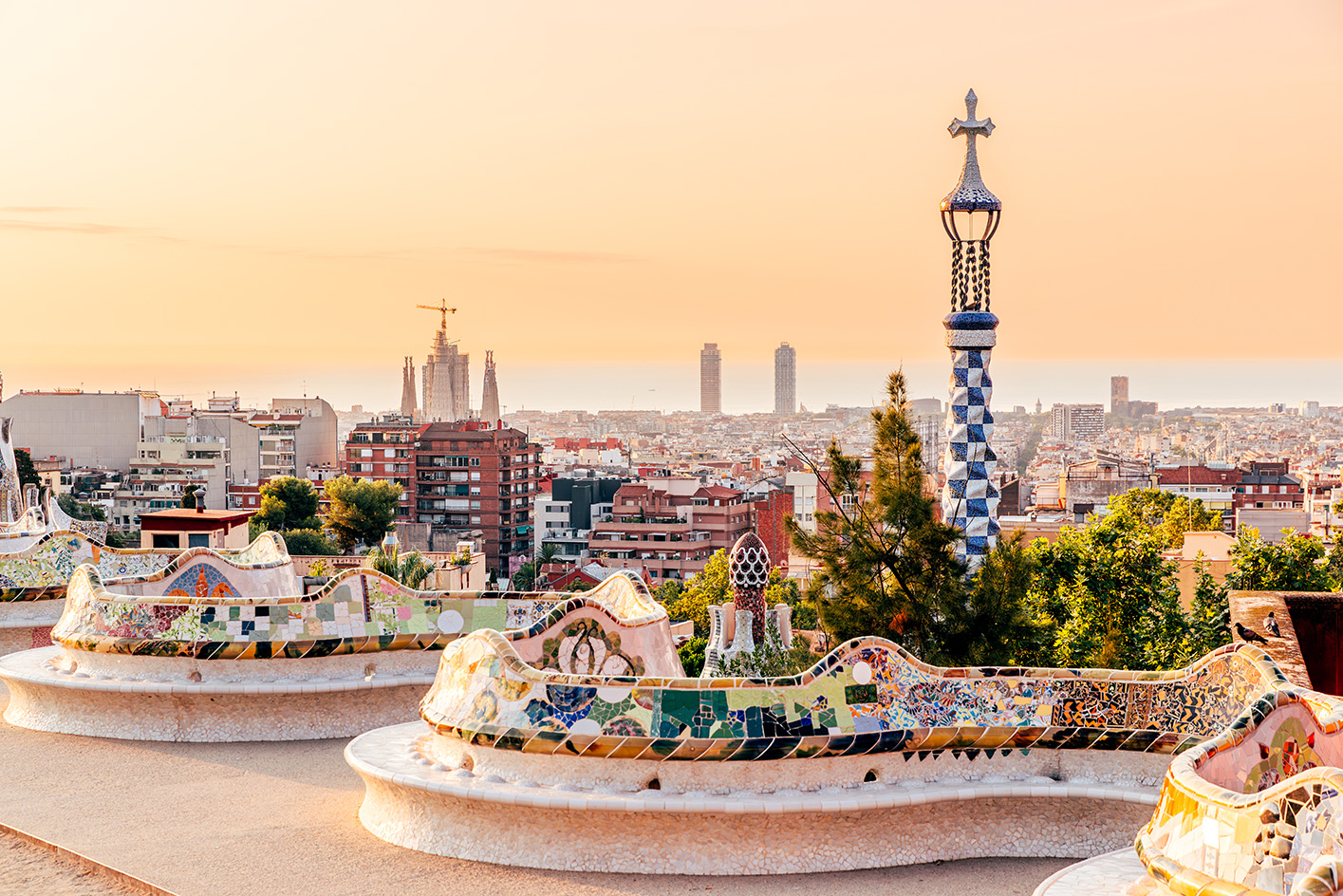
Park Güell
Green, expansive and full of Gaudí surprises and treasures, this park in the Carmel Hill area of Barcelona is a vibrant public attraction since its inception in 1922. Its entrance's dragon sculpture, undulating staircases, grottos and colourful tiles are instantly recognisable. Towers, follies and animals peek out of the foliage everywhere, symbolising, for Gaudi, a heaven on earth.
Casa Milà-La Pedrera
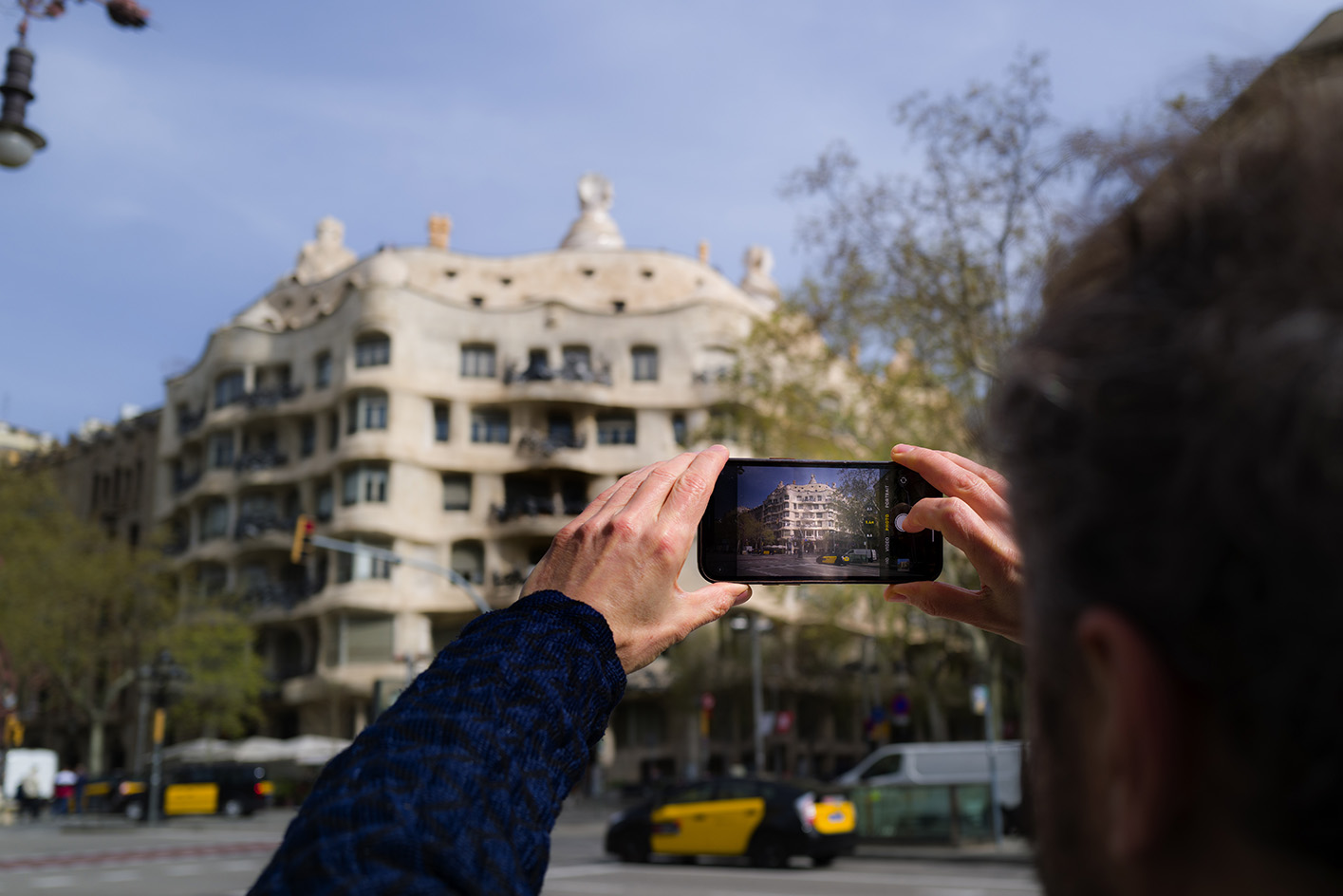
Thomas Heatherwick's recent book, Humanise, explains the designer's fascination with Gaudi's architecture, such as Casa Milà
At the start of the 20th century, Pere Milà and Roser Segimo, a married couple, commissioned Gaudí to design an apartment building on Barcelona's chic Passeig de Gràcia. Their home was to be nestled into one of the building's floors, while more apartments were to be rented out. It was a project that attracted a lot of attention and inspired numerous debates at its time for its wavy, unconventional (then, and to this day) forms. It opened to the public in 1996 and has housed the cultural organisation Catalunya La Pedrera Foundation since 2014.
Sagrada Família

Sagrada Família
The Sagrada Família is Gaudí's most recognisable masterpiece. The church, located in Barcelona's Eixample district, began construction in 1882 – more than 140 years and some five generations ago. Gaudí took over the design in 1883 from another architect, and he worked exclusively on this piece of architecture from 1914 to his death. The architect's complex, highly detailed designs meant works could continue beyond his passing – and while key elements, such as its Nativity Façade and Passion Façade are in place, some are still in progress. However, the completion is nearing – with the Tower of Jesus Christ, the basilica's tallest point, expected to be completed by the end of 2025.
Casa Vicens
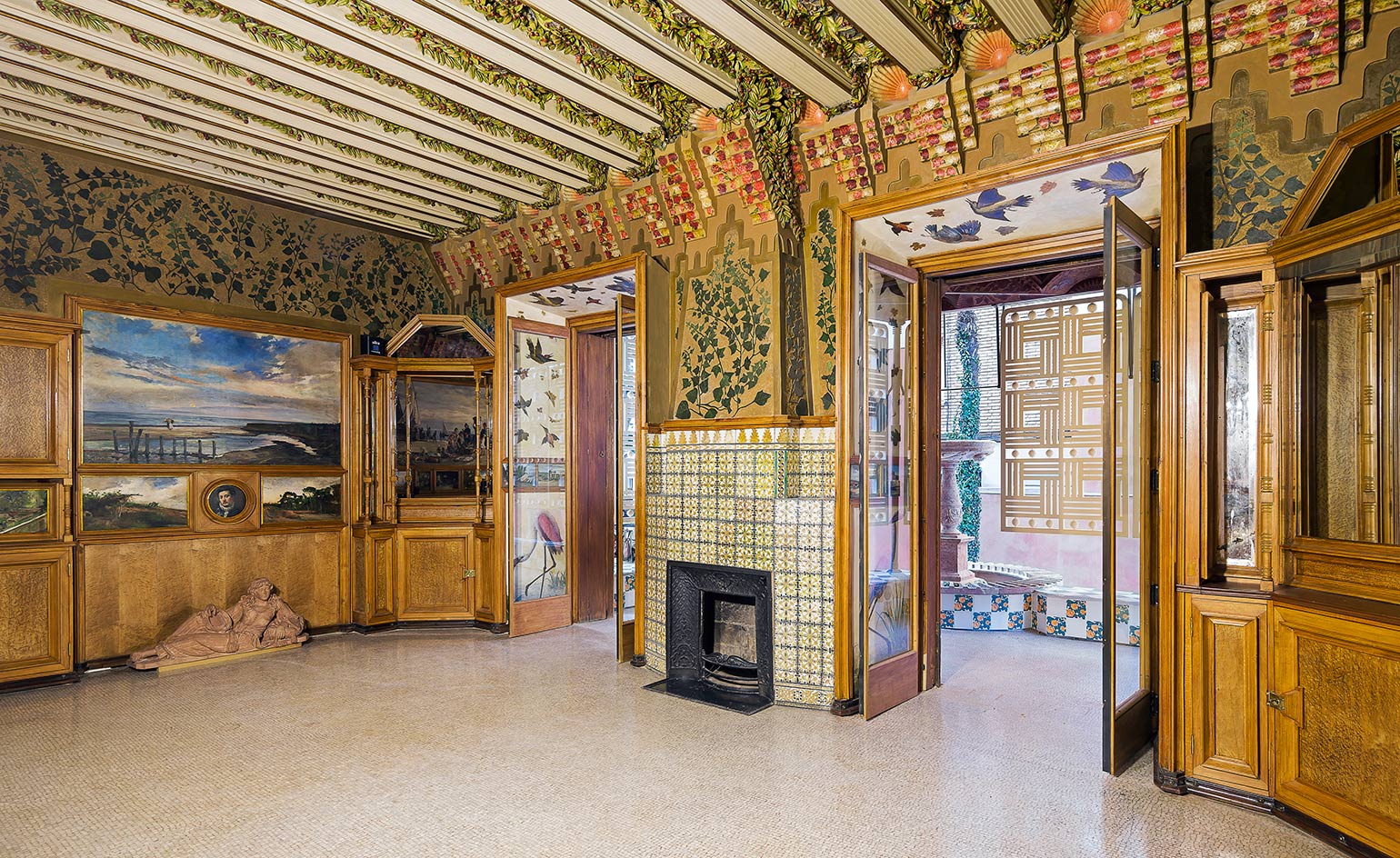
Casa Vicens, the first major project by Catalonian modernist Antonio Gaudí, was restored by architecture practices Daw Office and Martiñez Lapeña Torres Arquitectes and is open to the public
On a quiet street in Barcelona’s Gràcia district, Casa Vicens has long been an off-radar landmark – with Gaudi's other house designs often stealing the spotlight. Yet, this is the first major project by the Catalonian modernist, used until 2014 as a private residence. Its captivating façade of rich red brick and fanciful tilework were heavily influenced by Arabic architecture. Here, Gaudí used colour and decoration as a starting point – as opposed to the sinuous, organic forms that he experimented with in his later projects. The house reopened to the public in 2017 after years of meticulous restoration by Barcelona-based architecture practices Daw Office and Martiñez Lapeña Torres Arquitectes.
Ellie Stathaki is the Architecture & Environment Director at Wallpaper*. She trained as an architect at the Aristotle University of Thessaloniki in Greece and studied architectural history at the Bartlett in London. Now an established journalist, she has been a member of the Wallpaper* team since 2006, visiting buildings across the globe and interviewing leading architects such as Tadao Ando and Rem Koolhaas. Ellie has also taken part in judging panels, moderated events, curated shows and contributed in books, such as The Contemporary House (Thames & Hudson, 2018), Glenn Sestig Architecture Diary (2020) and House London (2022).
-
 Warp Records announces its first event in over a decade at the Barbican
Warp Records announces its first event in over a decade at the Barbican‘A Warp Happening,' landing 14 June, is guaranteed to be an epic day out
By Tianna Williams
-
 Cure your ‘beauty burnout’ with Kindred Black’s artisanal glassware
Cure your ‘beauty burnout’ with Kindred Black’s artisanal glasswareDoes a cure for ‘beauty burnout’ lie in bespoke design? The founders of Kindred Black think so. Here, they talk Wallpaper* through the brand’s latest made-to-order venture
By India Birgitta Jarvis
-
 The UK AIDS Memorial Quilt will be shown at Tate Modern
The UK AIDS Memorial Quilt will be shown at Tate ModernThe 42-panel quilt, which commemorates those affected by HIV and AIDS, will be displayed in Tate Modern’s Turbine Hall in June 2025
By Anna Solomon
-
 This striking Spanish house makes the most of a tricky plot in a good area
This striking Spanish house makes the most of a tricky plot in a good areaA Spanish house perched on a steep slope in the leafy suburbs of Barcelona, Raúl Sánchez Architects’ Casa Magarola features colourful details, vintage designs and hidden balconies
By Léa Teuscher
-
 This brutalist apartment in Barcelona is surprisingly soft and gentle
This brutalist apartment in Barcelona is surprisingly soft and gentleThe renovated brutalist apartment by Cometa Architects is a raw yet gentle gem in the heart of the city
By Tianna Williams
-
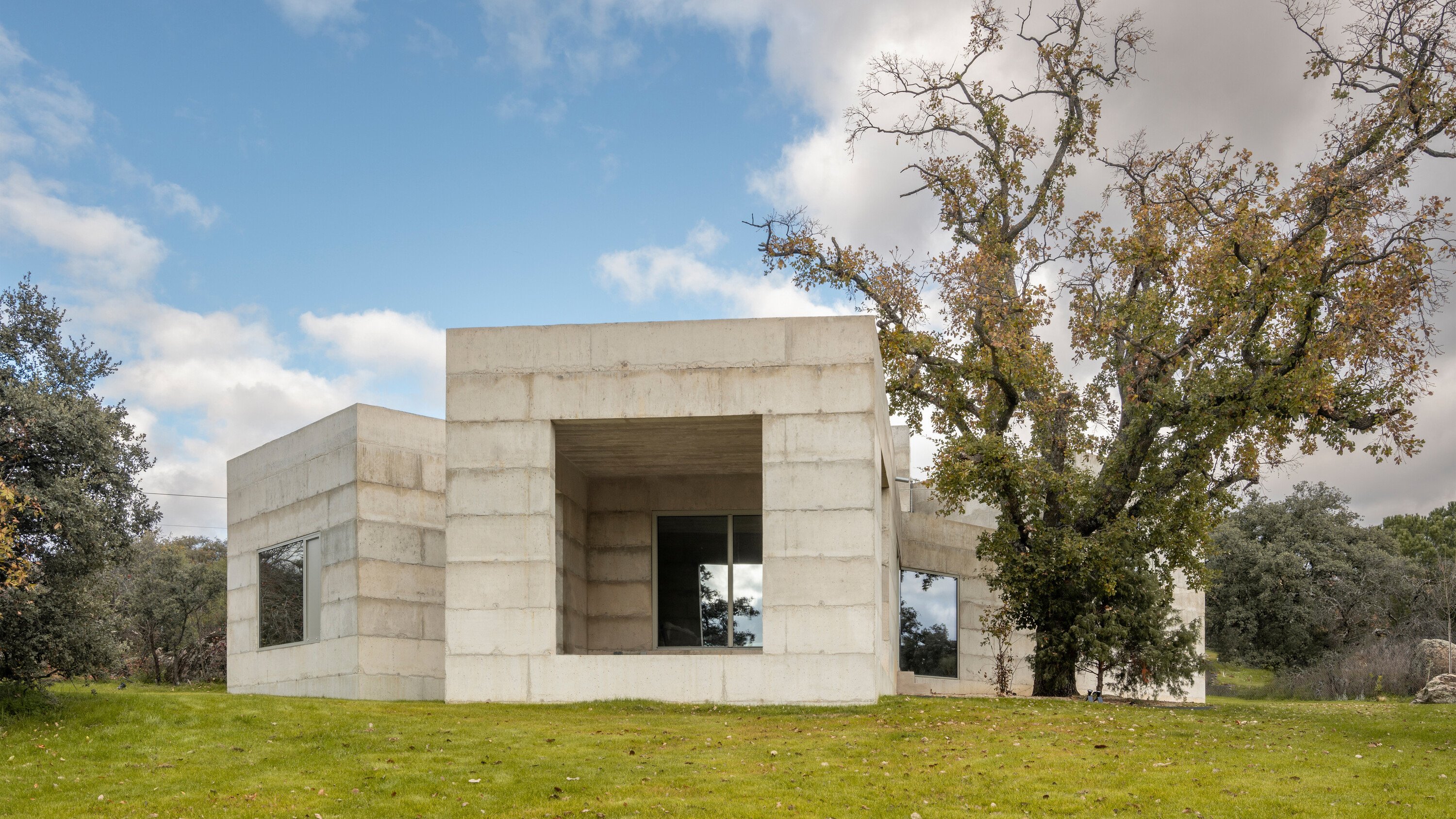 A brutalist house in Spain embraces its wild and tangled plot
A brutalist house in Spain embraces its wild and tangled plotHouse X is a formidable, brutalist house structure on a semi-rural plot in central Spain, shaped by Bojaus Arquitectura to reflect the robust flora and geology of the local landscape
By Jonathan Bell
-
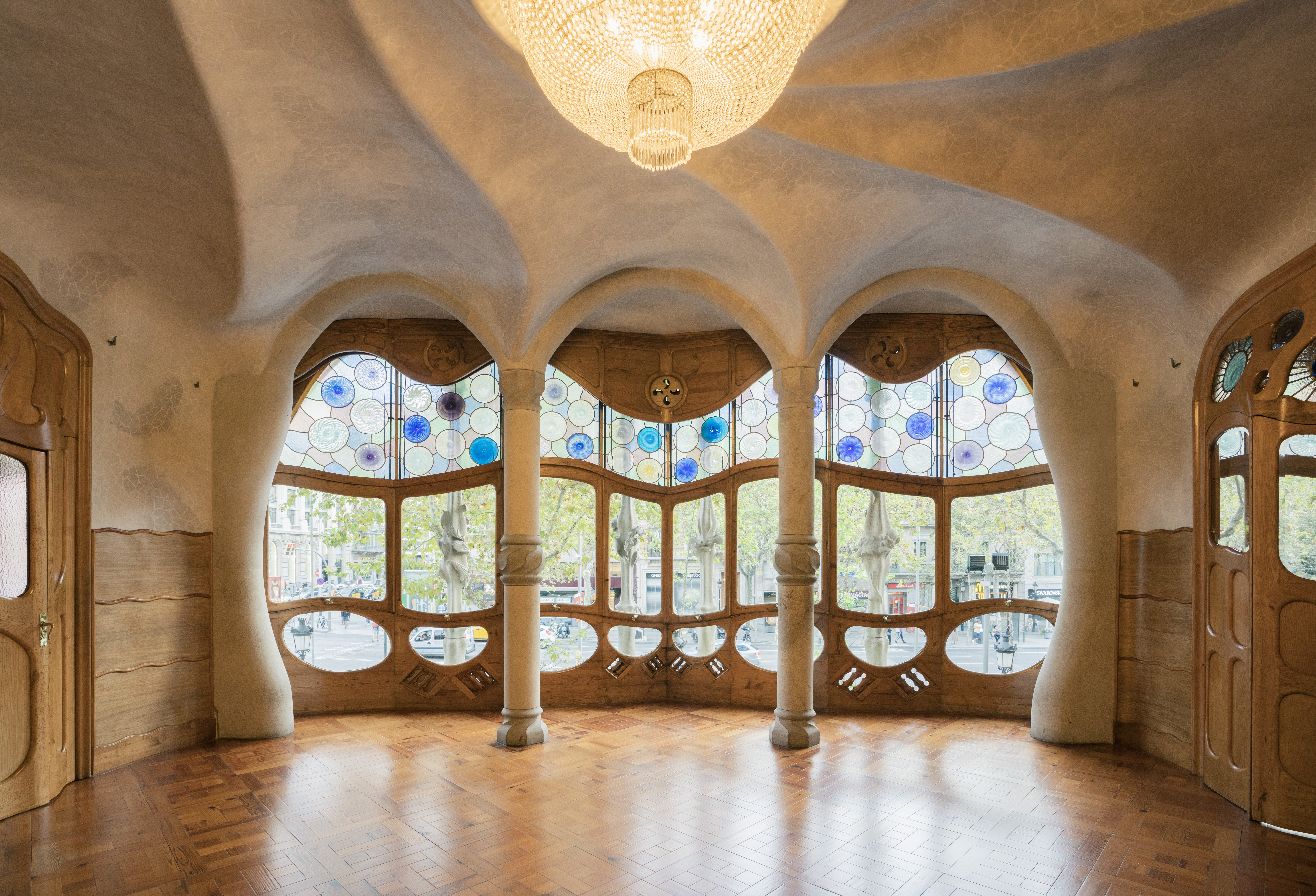 The case of Casa Batlló: inside Antoni Gaudí’s ‘happiest’ work
The case of Casa Batlló: inside Antoni Gaudí’s ‘happiest’ workCasa Batlló by Catalan master architect Antoni Gaudí has just got a refresh; we find out more
By Ellie Stathaki
-
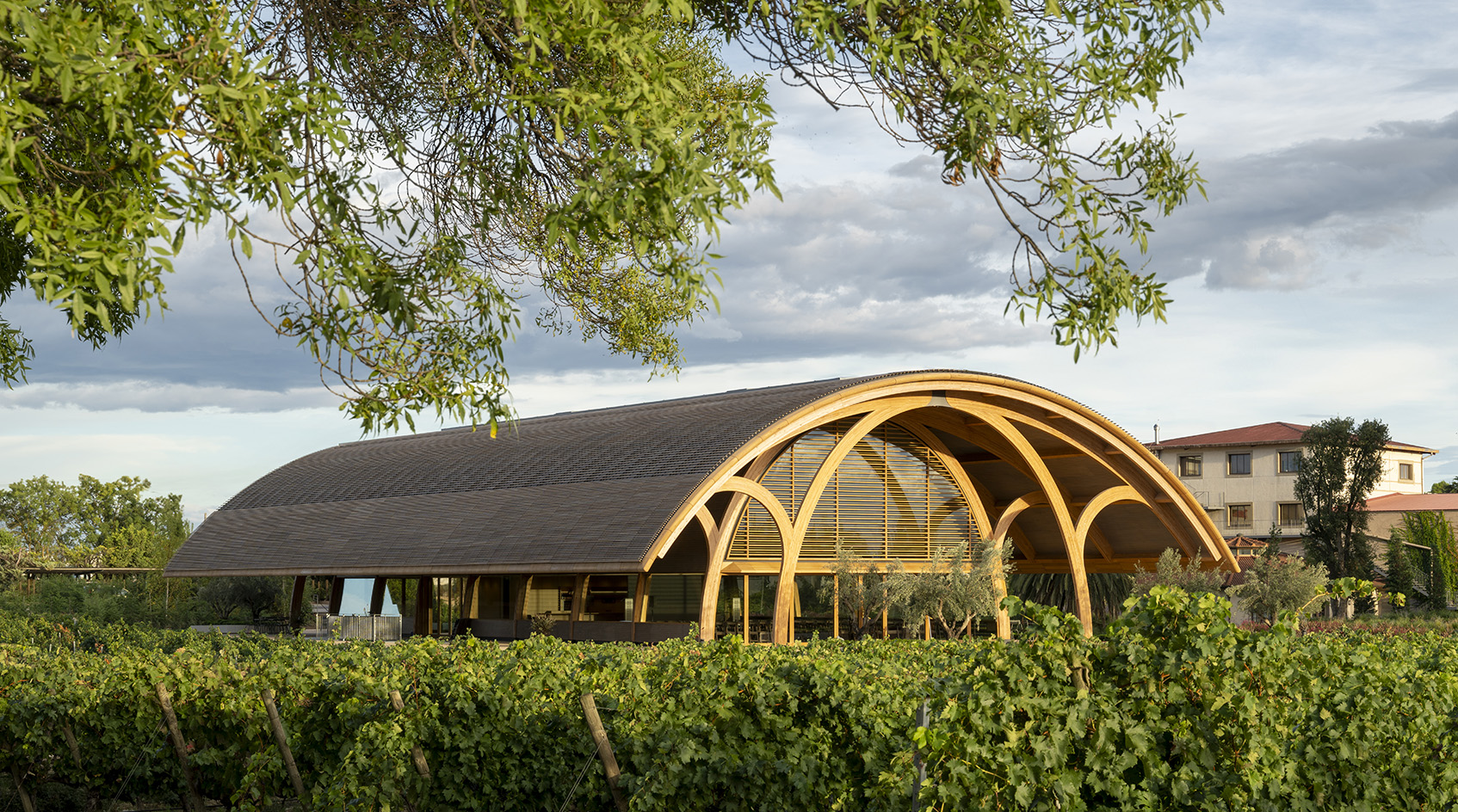 Bodegas Faustino Winery celebrates process through its versatile vaulted visitor centre
Bodegas Faustino Winery celebrates process through its versatile vaulted visitor centreBodegas Faustino Winery completes extension by Foster + Partners in Spain, marking a new chapter to the long-standing history between the architecture practice and their client
By Ellie Stathaki
-
 Playball Studio's architecture balances the organic and the technical
Playball Studio's architecture balances the organic and the technicalPlayball Studio, a young Indo-Spanish design practice, features in the Wallpaper* Architects’ Directory 2024
By Pallavi Mehra
-
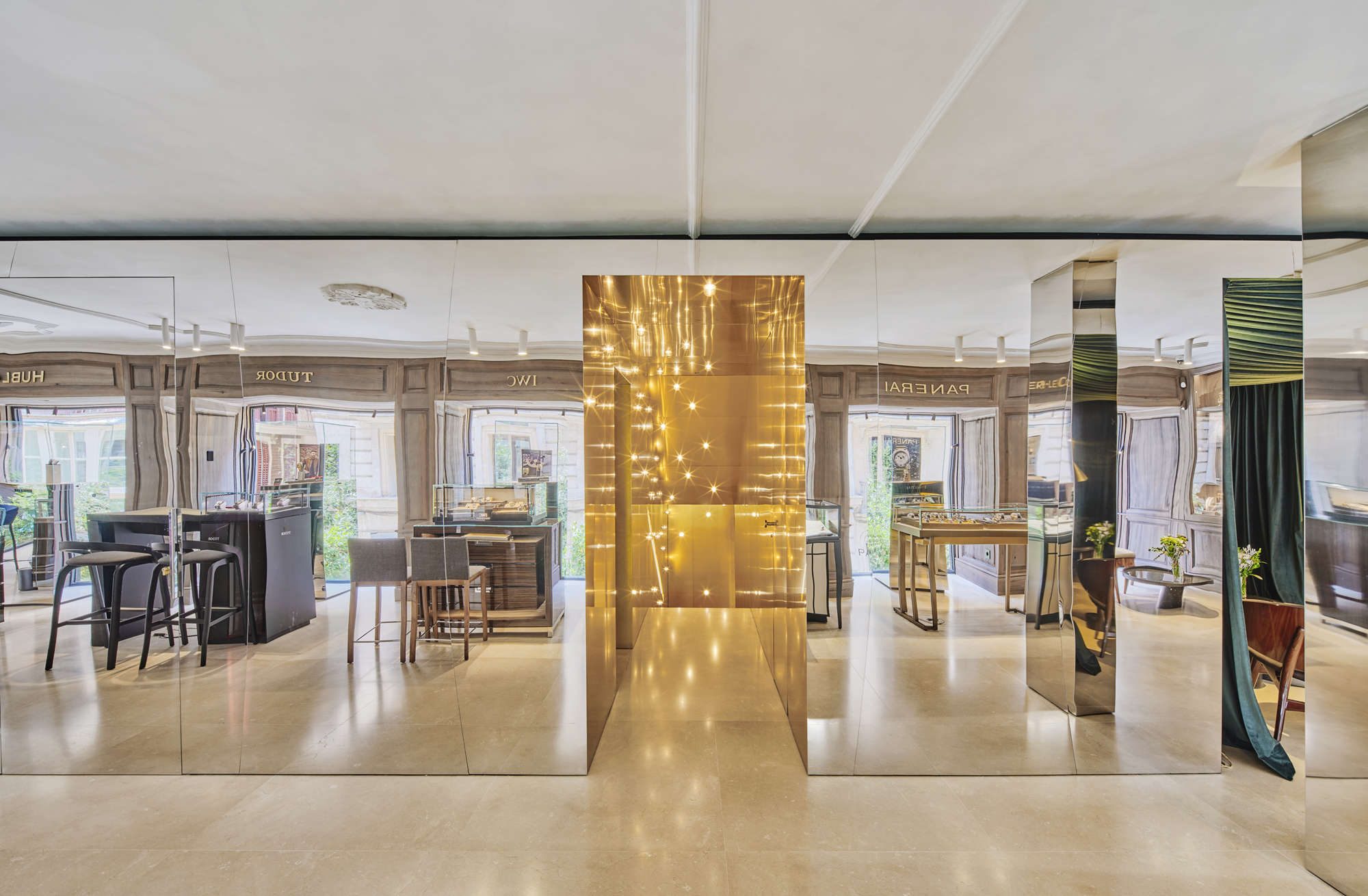 In Palma, beloved watch boutique Relojeria Alemana gets a dramatic revamp
In Palma, beloved watch boutique Relojeria Alemana gets a dramatic revampEdificio RA for Relojeria Alemana has been redesigned by OHLAB, refreshing a historical landmark in Palma, Mallorca with a 21st-century twist
By Ellie Stathaki
-
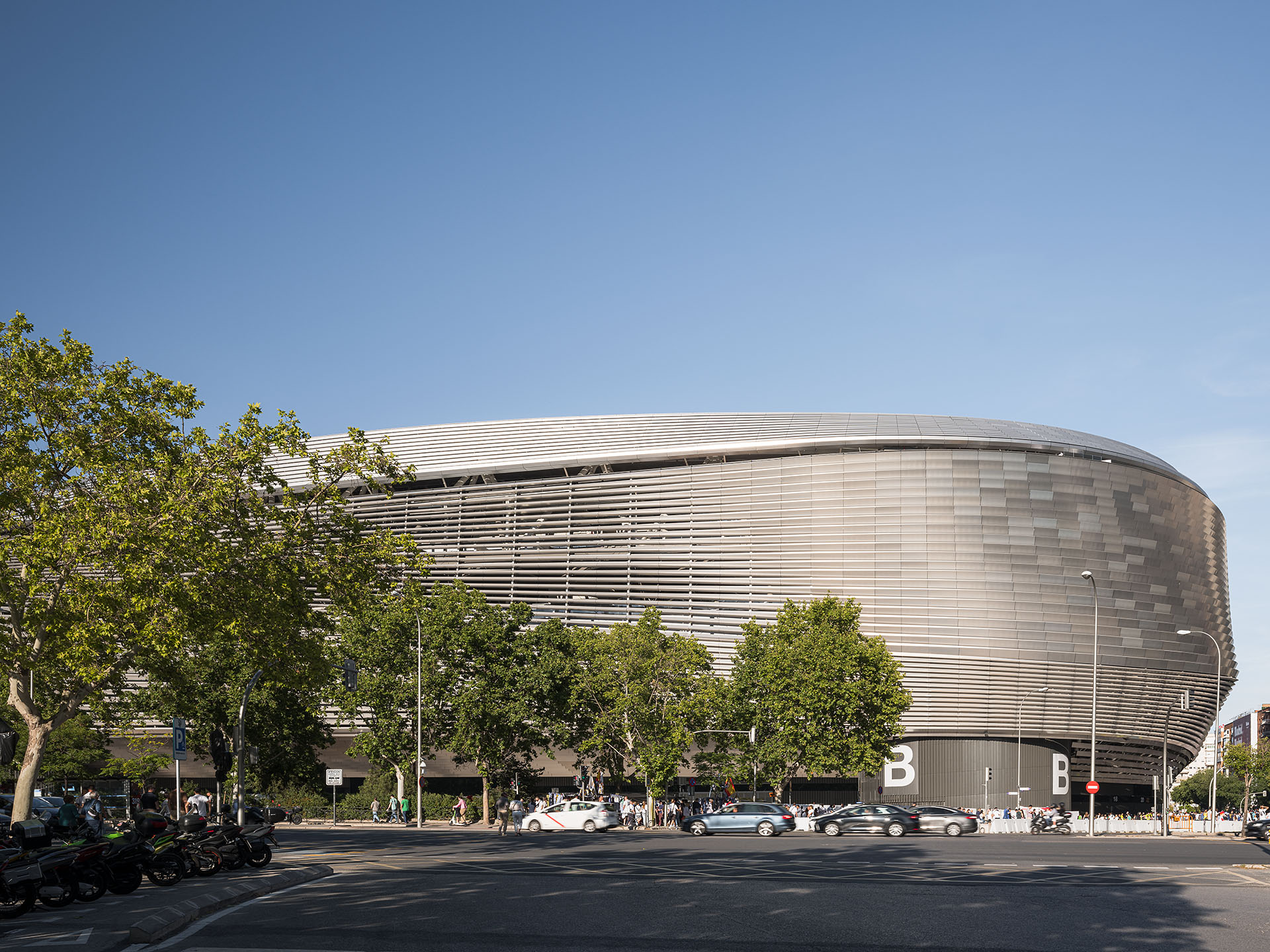 Santiago Bernabéu stadium redesign: a sneak peek into the works
Santiago Bernabéu stadium redesign: a sneak peek into the worksWe take a tour of the Santiago Bernabéu stadium in Madrid, as the beloved sports facility is being given a refresh
By Agnish Ray